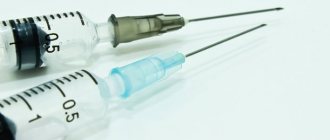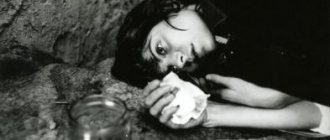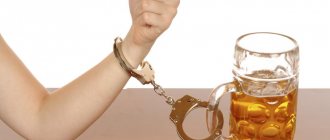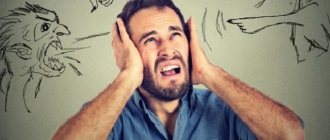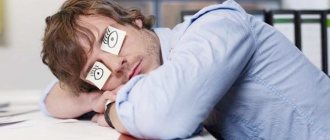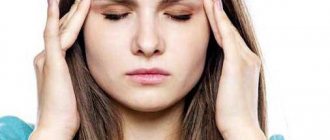Description of the problem
Heroin withdrawal is commonly called withdrawal syndrome. This is a large number of somatic and psychological disorders that manifest themselves from the lack of a dose of the drug. The duration and severity of the syndrome depends on various factors: age, health status, length of drug addiction, the amount of drug used and the method of its administration.
Doctors distinguish 4 stages of withdrawal from heroin.
- Stage 1 begins 8-12 hours after taking the drug.
- The second stage begins 30-36 hours after the initial stage.
- Stage 3 occurs 40-48 hours after the last use of the drug.
- The final stage begins on day 3 and lasts from 5 to 15 days. Most drug addicts do not feel the effects after 8 days and feel healthy.
How to ease withdrawal symptoms
On the Internet you can find advice from supposedly or actually “quitted” drug addicts and relatives of such people. Since drug addiction is still a disease, all the advice below is discussed through the prism of medicine.
The first “advice” is usually addressed to heroin addicts. Stock up on opioid painkillers. The names are not listed here for ethical reasons and in accordance with legislation regarding prescription drugs. Theoretically, the use of such a drug should stimulate a gradual withdrawal from heroin. In practice, the addict first simply “transfers” to the medicine, and then returns to heroin. According to doctors, this is the same as an alcoholic trying to wean himself off vodka by drinking beer.
Attention!
We strongly discourage following these “advices” - they were written by drug addicts... some of them are no longer alive. For professional help, contact specialists 8 (800) 200-99-32
A similar method of dealing with drug withdrawal syndrome also exists in official medicine. It is used in long-term dependent people, in whom abrupt drug withdrawal can actually cause a global malfunction of all internal organs and systems. However, such gradual weaning is carried out on the basis of precise calculations and under the strict supervision of doctors in a hospital setting. In addition, stepwise drug withdrawal can be achieved by using non-narcotic drugs.
Tip two. Self-administration of sedatives and hypnotics at home. Doesn't stand up to any professional criticism. If only because an overdose of such drugs is possible, deterioration in health and even death from respiratory arrest.
Tip three. Instead of drugs - alcohol, and in large quantities. In the best case, drug addiction will smoothly flow into alcoholism; in the worst case, these two illnesses will simply begin to coexist. To this can be added pathological reactions (for example, mental disorders), hangovers and serious liver damage. Considering that many drug addicts suffer from hepatitis of various forms, it is worth thinking about the advisability of such “therapy”.
Tip four. Somehow combine the methods listed above. As if each of them weren't bad enough on their own.
Tip five. Transfer the withdrawal to “dry” (that’s what it’s called). No drugs, no doctors, just your own will and determination to overcome everything. Anyone who is capable of this inevitably commands respect. However, to use this method on yourself, a person needs to be very strong and practically healthy.
We remind you that all previous advice is non-medical. Those who advise how to ease withdrawal may have never experienced it themselves. How do doctors advise you to cope with withdrawal symptoms?
Reasons for development
To understand why withdrawal occurs, you need to know how the drug works. Heroin contains opium alkaloids. Opiates are responsible for the narcotic effect; they give a person pleasure after consuming heroin.
Opiates begin to act immediately and cause complications in the brain and spinal cord, as well as in the intestines. Alkaloids work as a strong anesthetic. They remove pain, anxiety and any discomfort. Over time, opioid receptors decrease, and synthesis also decreases, and those receptors that remain become greatly insensitive. When the patient does not receive a new dose of the drug, the work of the receptors and the pain-relieving system, which is accustomed to the help of the drug, is turned off.
The body tries to normalize the activity of the pain-relieving system, but for this it is necessary to endure withdrawal for some time. During this period, all the symptoms and sensations that were hidden under the influence of the opiate resume.
How to survive withdrawal
The opinion of specialists on this issue is clear: only under the supervision of narcologists! It is ideal if withdrawal in all its manifestations takes place in a hospital setting. This will ensure that the dependent person receives full assistance. This is especially important if the drug addict experiences withdrawal symptoms unexpectedly, and not as a result of a decision to give up the psychoactive component of his life.
“Home-grown” ways to survive withdrawal may not work for many reasons:
- With drug addiction, various diseases often develop (hepatitis has already been mentioned), for which it is not recommended to take certain painkillers, sedatives and other drugs;
- the addict himself, even under the supervision of family and/or close people, may simply not be able to cope with the situation, since withdrawal can proceed very individually and unpredictably;
- the hospital will provide not only relief from withdrawal symptoms, but also further detoxification of the body, as well as rehabilitation (this requires the consent of the dependent person).
Question: “How to overcome withdrawal symptoms?” can hardly be called unimportant. The best option is to trust drug addiction specialists so that the first step towards giving up dope is truly correct.
Signs of the syndrome
Withdrawal from heroin addiction has symptoms that appear as you move from one stage to the next.
On average, the problem appears 10 hours after the last dose of heroin. People whose period of severe withdrawal has ended may feel its symptoms again after a while. It increases gradually, causing irritability, nervousness, and discomfort.
At the initial stage, the following signs are noted in addicts:
- enlarged pupils;
- frequent sneezing;
- yawn;
- runny nose and tears;
- bad dream.
During stage 2, the following are added to the above:
- weakness and fever;
- sweating;
- pain in bones and muscles.
The person does not eat during the entire period of withdrawal, even if it lasts 1-2 weeks. Attempts to feed the patient can cause aggression and anger, and the chewing process itself causes discomfort and cramps. At stage 3, all symptoms are complemented by severe pain. Among them are the following symptoms:
- the pupils react poorly to light and are enlarged;
- sneezing can reach up to 100 times in a row;
- there is copious secretion of saliva;
- itching appears on the veins in the place where the injections were given;
- poor sleep does not give rest;
- nervousness and anger appear with renewed vigor.
In this state, people are ready to do anything to take a new dose of drugs and not suffer anymore. They beg, plead and even threaten their relatives. They steal money from them, deceive them and kill for the sake of a dose.
At the final stage, the patient is completely exhausted, eats nothing and loses weight. Signs of stage 4 addicts are:
- cover is dry, dark in color;
- severe diarrhea, abdominal pain.
Symptoms of heroin withdrawal
Heroin withdrawal or withdrawal syndrome is characterized by symptoms such as:
- constant coughing and sneezing;
- dilated pupils;
- "goosebumps" on the skin;
- increased irritability and insomnia;
- lacrimation;
- fever or chills (most often one condition replaces the other);
- increased sweating;
- weakness in the body;
- severe pain in the muscles of the legs, arms, back and neck.
In severe cases (at the late stage of development of withdrawal syndrome), the pupils no longer respond to light, sneezing and coughing practically do not stop, saliva runs from the mouth, and pain in the back and limbs literally twists the drug addict, severe itching is felt at the injection sites, diarrhea occurs, the skin takes on an earthy tint and the eyes seem to “fall” inward.
Consequences and forecasts
Doctors say that the withdrawal itself does not harm the body. It is very difficult to survive it for 3-5 days, but the person recovers. Taking a narcotic substance has a negative effect on the body, destroying all systems and organs. Due to the fact that a person does not eat anything for a long time, the body experiences severe stress.
The main consequences include respiratory system disorders, arrhythmias, heart attacks and strokes. Withdrawal causes aggression in the patient, he can harm himself and others. Over the course of a month or even six months, your mood can change dramatically. Insomnia, anxiety and fatigue begin to appear.
Physical dependence on the drug after successfully undergoing the syndrome becomes much weaker, but psychological dependence increases. The patient can again begin to look for a dose, so as not to suffer from a new wave of withdrawal. If you undergo full treatment with the help of doctors, you can completely cope with heroin withdrawal and addiction.
What anti-withdrawal pills should you not give?
How can it be easier for an addict to cope with withdrawal? When trying to alleviate the patient’s condition, it is advisable not to make it worse.
There are drugs whose use is excluded in the event of withdrawal symptoms. These include:
- Tramal. It is considered the best drug for relieving withdrawal symptoms. The medication is effective, gives an analgesic effect, and affects the central nervous system. Used by doctors to relieve withdrawal symptoms. Its independent use is strictly prohibited. The substance belongs to active antagonists. It reduces some pain sensations and intensifies others. Withdrawal after taking it will become tolerable, the manifestation will drag on for several days. The drug causes a chemical dependence that forms an addiction in the addict. Prescribed in therapeutic doses, along with other medications. Use no more than 8 capsules per day.
- Under no circumstances should you use narcotic drugs to relieve withdrawal symptoms. This is a disservice to a loved one. The withdrawal symptoms will stop for a while; the addict will need a large dose to stay away for a few days. Treatment stops and the disease relapses.
- Tranquilizers. Their use by patients is excluded. The drugs were created as symptomatic remedies to eradicate anxiety. They quickly cause chemical dependence, similar to drugs. Each drug received a narrow focus of therapeutic activity. The use of drugs without the knowledge of the doctor is prohibited.
When thinking about how to help a drug addict with withdrawal, remember that medications suitable for a drug addict to relieve withdrawal symptoms cannot be determined independently.
It is necessary to study several volumes of specialized literature that provide an understanding of the effects of a particular drug on the body when using each type of drug. The selection is carried out only by a qualified specialist in the hospital. This way, you can avoid harming the patient and select drugs that are optimally suitable for him, relieve withdrawal symptoms, calm the addict, and are not addictive.
Getting rid of the problem
It is difficult to relieve withdrawal symptoms at home. You can overcome it on your own, but not everyone succeeds. It is necessary for the patient to be supported by his family, then doctors get involved in the work.
Relieving the syndrome at home
Heroin withdrawal can be relieved with medications for those patients who have a short history of drug addiction, within 2 months. If the addiction lasts for a long time, it is better not to torture the patient and seek help from a clinic. There are many clinics that offer in-home heroin withdrawal . As narcologists say, it is difficult to fully help a patient at home.
A specialist will not be able to monitor the patient around the clock to monitor changes in behavior and help prevent a suicide attempt in time. The patient needs treatment with special equipment and medications.
Treatment in hospital
Special hospitals recommend a range of services for patients with a heroin problem:
- relieving withdrawal symptoms with medications;
- detoxification of the body;
- rehabilitation.
The main method of elimination is UBOD, or rapid opioid detoxification. This method uses medications that are administered through a gastric tube. Narcologists use antidepressants, tranquilizers and psychotropic drugs. To restore the body, the patient is given vitamins and amino acids.
Mental dependence on heroin remains at the same stage, so when the withdrawal symptoms are over, the patient is referred for consultation to a psychologist.
Does this mean that other addicts do not need the help of a narcologist?
The doctor’s task during withdrawal is not only to alleviate the patient’s suffering.
Comprehensive individual therapy during and after withdrawal helps the patient overcome the fear of “getting high” and make a decision about treatment. It’s no secret that the horror of withdrawal is the main factor that prevents a drug addict from quitting.
When planning to overcome the withdrawal of a drug addict at home, relatives and friends must understand the other side of the solution: the problem of addiction continues to exist with the tacit support of the family, without going beyond its boundaries
. The addict gets used to getting relief without effort and does not receive the proper motivation to recover.
If your relative is already experiencing severe withdrawal symptoms, urgent treatment for drug addiction is necessary! Addiction is progressing!
Drug addiction treatment after withdrawal
Therapy is considered successful if a person has completely stopped using drugs, has no cravings for them, has completed a rehabilitation course and lives a full life (this applies to both the social and work spheres). All therapeutic measures are carried out in several stages:
- Treatment of withdrawal symptoms. It is considered completed after the elimination of all somatovegetative and neurological disorders.
- Correction of post-withdrawal disorders. At this stage, it is important to normalize the patient’s sleep and psycho-emotional state, to remove residual manifestations of disturbances in the cardiovascular, endocrine, urinary systems and other internal organs. Psychotherapy is used to minimize craving for drugs.
- Maintenance treatment aimed at preventing relapse of the disease. It is optimal to place the addict in a specialized rehabilitation center. Symptomatic supportive drug therapy is prescribed, and work with a psychologist continues (individual consultations and group sessions). Recently, family therapy has become widespread, which allows the addict to more quickly achieve social adaptation.
Medical doctors will select an individual program for relieving withdrawal symptoms, subsequent drug addiction treatment and rehabilitation.
Authorship and editing of the text:
Head of the Department of Psychiatry and Narcology of the Alkoklinik MC, psychiatrist-narcologist Popov A.G., psychiatrist-narcologist Serova L.A.
CAN'T FIND THE ANSWER?
Consult a specialist
Or call: +7 (495) 744-85-28
Call! We work around the clock!
Psychological dependence
The disease drug addiction is complex; even the irresistible craving for a drug itself has two components: psychological and physical dependence.
As a rule, addiction is first formed in the psyche. It occurs for a reason; the patient has within himself a predisposition to develop the disease. Unfortunately, almost every person has mental characteristics that can lead to drug addiction.
If someone has problems with communication, with building harmonious happy relationships, achieving success and goals, we can say with confidence that behind this there are some complexes, fears, imposed beliefs and attitudes that prevent the person from being fully realized as a happy and successful person. In this case, the psyche is looking for a way to eliminate the problem, and usually there are two of them: solve the problem and forget about it.
Drugs allow you to do both. Of course, such a “solution” to a problem situation will be dubious, but at first, drugs, and heroin in particular, really help you loosen up, become more active, and even increase your status in some social groups. By clouding a person’s mind, they make it possible to completely erase problems from one’s head for a while.
So, after several uses, which at first bring euphoria and the illusion of resolving difficult situations, the human psyche becomes attached to the process of taking heroin and begins to identify it with something positive.
Rehabilitation for heroin addiction
The process of rehabilitation after heroin addiction makes it possible for a former drug addict, whose life followed a certain disastrous scenario, to rebuild in a new way and change its course. Rehabilitation is based on the understanding that the external side of our life is determined by internal psychological attitudes; it is they that change during the treatment process to new ones that guarantee a healthy lifestyle. This way, a person addicted to heroin has a real chance to return to normal life.
Causes of body withdrawal in a drug addict
Drugs are poisons.
They flush vitamins and minerals from the body. But the body has a hard time without these substances. Is it possible to build a full-fledged house without floorboards, without glass for windows, without slate for the roof? It is possible if you find others instead of these materials. But the body does not have such an opportunity, and it cannot cope, it begins to hurt. Withdrawal symptoms such as aches and pains are constantly drowned out by the drugs you are taking, and when you stop taking them, you simply begin to feel the body and its signals. The worse the body’s condition, the stronger the signal. The body gets used to fighting toxins every day, it rebuilds its work. And when the toxins don’t arrive, a breakdown begins. This is an approximate diagram of how withdrawal occurs.
From some poisons, the physical symptoms are not so strong, but the mental state will be such that without a dose it is almost impossible to survive them. For example, when taking desomorphine, signs of withdrawal are felt just a few hours after the last injection, and this is a very strong physical discomfort. But withdrawal from LSD brings more psychological problems. This does not mean that it does not cause drug withdrawal. This means that it greatly affects the psyche, and the consequences cannot be dealt with 100%, because there remains a risk of hallucinations, inappropriate behavior and accidents due to this.
Drugs poison the body day after day in small doses. Some of the toxins are washed out, and some are deposited in the body tissues, especially in fatty tissues. Even very thin people have a body fat percentage, even if it is only 5-15%. These deposits are like a Trojan horse that destroys the body from the inside.
As a rule, during the withdrawal period, a drug addict cannot eat or sleep, which impedes recovery and contributes to the continuation of this condition.
At our center you will find support - counseling and rehabilitation, which includes “Drug Weaning” as the first step. Without the use of medications, a person’s condition improves thanks to vitamin and mineral complexes, a balanced diet, sleep and special exercises that relieve the negative physical and emotional symptoms of drug withdrawal, helping the person feel better, start eating and sleeping.
Call us!
Share:
Marijuana addiction
Salvia: a drug worth knowing about
Therapy in a hospital setting
First of all, the patient is given medications to stabilize the condition and prevent acute, often potentially life-threatening complications. For this purpose, drugs from the following pharmacological groups are used:
- Infusion solutions to compensate for hypovolemia, “level” the electrolyte balance and accelerate the elimination of toxic products of the metabolism of narcotic compounds through the kidneys.
- Cardioprotectors for stabilizing blood pressure, normalizing vascular tone, heart rate, improving the saturation of myocardial cells with oxygen and nutrients.
- Sedatives to relieve psychomotor agitation, hyperreactivity, sometimes aggression, feelings of severe restlessness and anxiety.
- Hepatoprotectors to protect liver cells from the toxic effects of biotransformation products of narcotic substances.
- Medicines to relieve pain. Taking into account the etiopathogenesis of drug addiction, drugs from the group of NSAIDs and antispasmodics are administered.
- Vitamins and amino acids. To accelerate metabolic processes and normalize the production of enzymes, B vitamins (in particular B1 and B6), nicotinic and ascorbic acid, alpha-tocopherol and some others are used.
- Nootropics to protect brain cells from oxygen starvation and stimulate cerebral circulation.
This is not a complete list of medications used in the Alkoklinik hospital. A list of medications is compiled for each individual patient, taking into account the severity of the condition, withdrawal symptoms, concomitant pathologies and possible contraindications.
Ultra-fast detoxification: indications and features of the procedure
If addicted to drugs of the opium group, patients are offered treatment for withdrawal using the UBOD method using drugs - opioid receptor blockers. The procedure is performed under general anesthesia, which allows the patient to be given high doses of the drug and avoid a vegetative-metabolic crisis. After mandatory preparation (diagnosis, sometimes laboratory tests, written consent, etc.), the patient is immersed in general anesthesia and naltrexone is administered at a certain interval and in a strictly calculated dose.
Important!
During UBI, the patient’s condition is constantly monitored, including using connected equipment. The cleansing of the body from opiates is indicated by the restoration of normal blood pressure, pulse, temperature and some other parameters.
Auxiliary techniques
In addition, the following detoxification methods are widely used in the hospital:
- ILBI (intravenous laser irradiation of blood):
- plasmapheresis.
After relief of acute symptoms, a variety of physical procedures are possible, for example, electric sleep, massage, reflexology.
How to speed up drug elimination processes and support the body
How to get rid of withdrawal symptoms? There is a group of methods for these purposes. The first and main thing is detoxification. It is carried out in several ways.
The main one is medication. With its help, it is possible to cope with the pathological manifestation in a matter of days. Several types of drugs are used:
- Opioid receptor antagonists. Naloxone, Naltrexone.
- Solutions. Saline solution, magnesium sulfate. Glucose. Parenterally (intravenously).
- Diuretics.
Hepatoprotectors and drugs based on cardioprotectors are mandatory. To protect the liver and heart from harmful influences. Others as required.
The second method of detoxification is hardware. As a rule, it is auxiliary. Plasmapheresis, hemodialysis.
The third method is UBOD. Or ultra-rapid opioid detoxification. Allows you to achieve the effect within 6-8 hours. It takes place under general anesthesia.
How to cure drug addiction?
In a situation with heroin addiction, we are talking only about inpatient treatment. It must include all the mandatory stages of chemical dependence treatment:
- Complete detoxification.
- Long-term rehabilitation.
- Socialization.
Most likely, in the case of heroin addiction, professional motivation will be needed. During treatment, special attention is paid to restoring all body functions impaired by heroin use. A psychologist has a lot of work to do, because the mental attachment to heroin is very strong.
